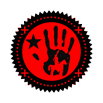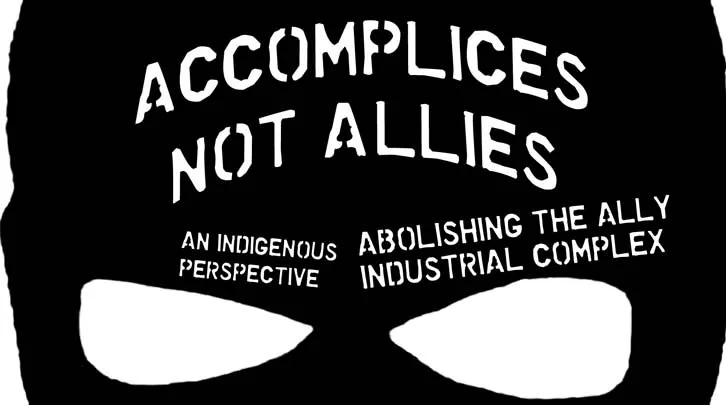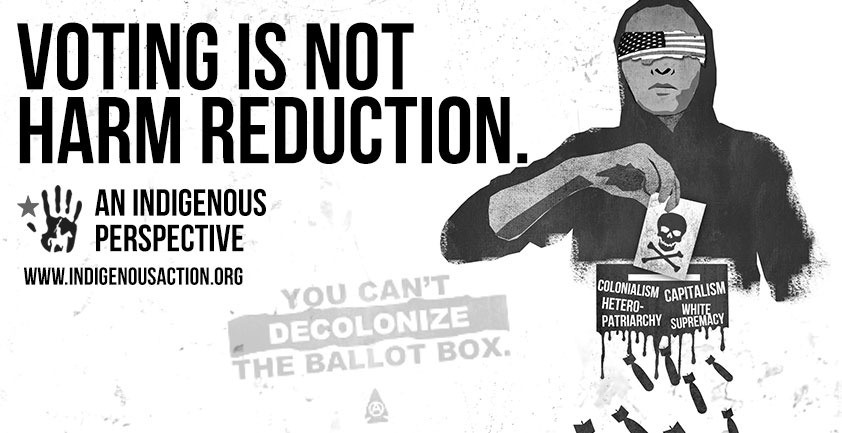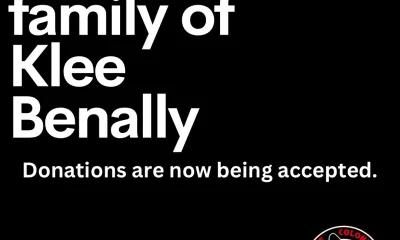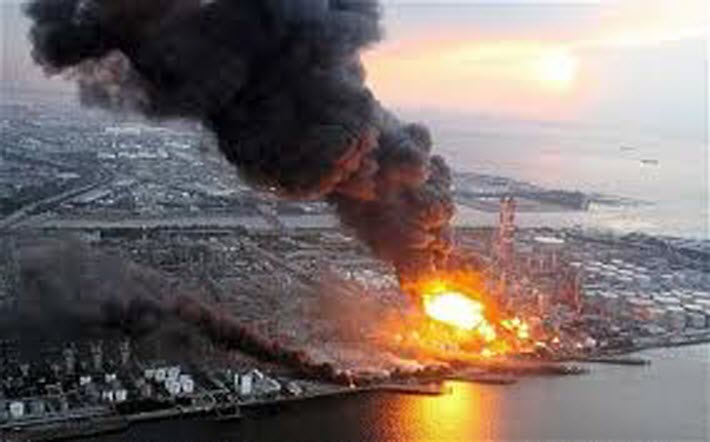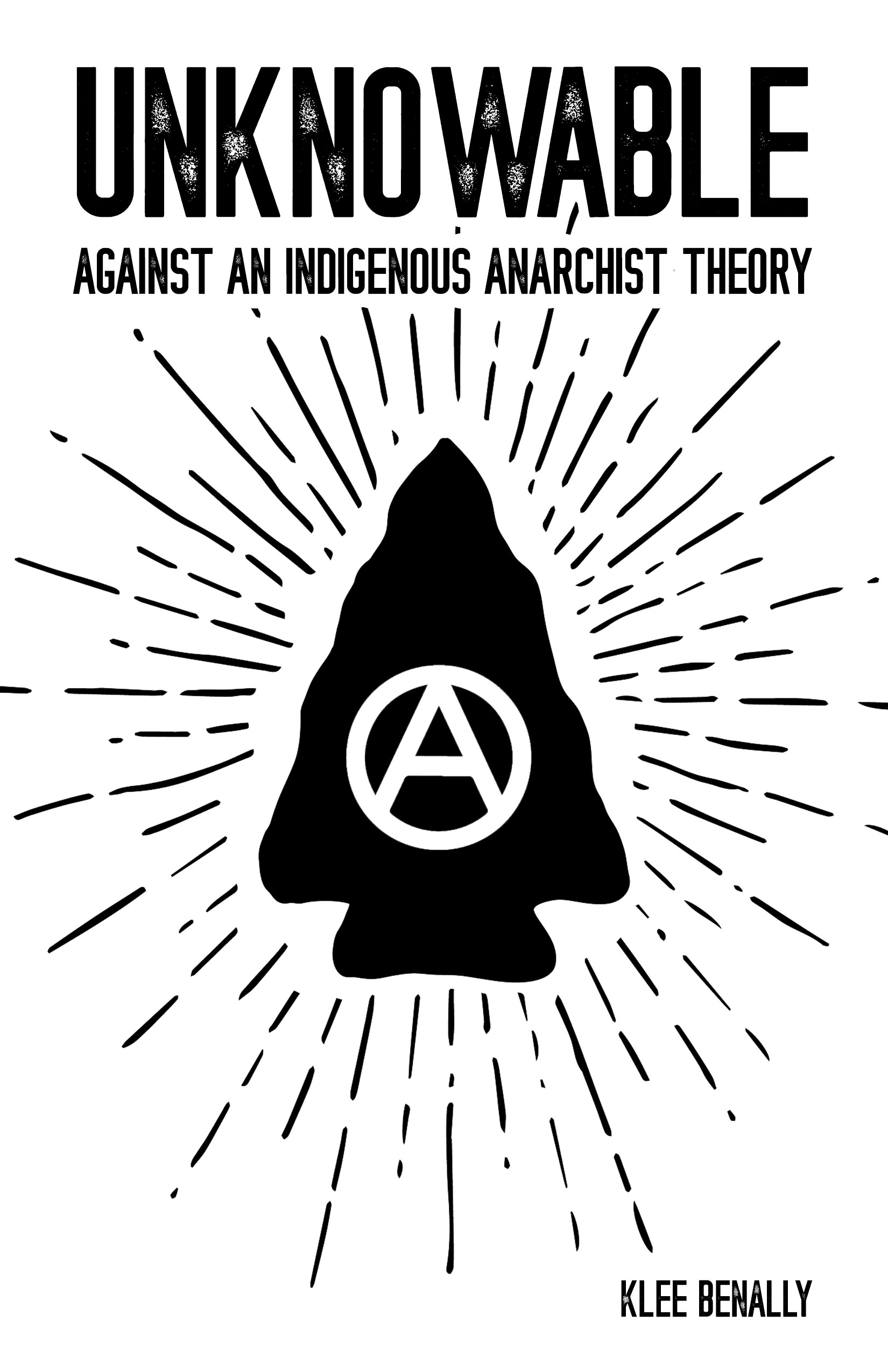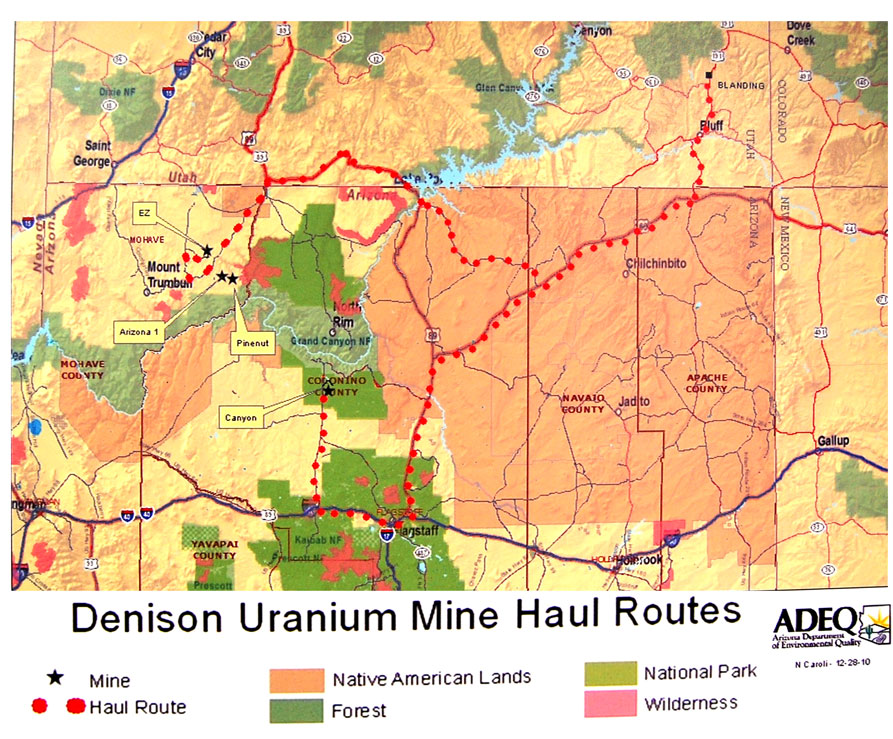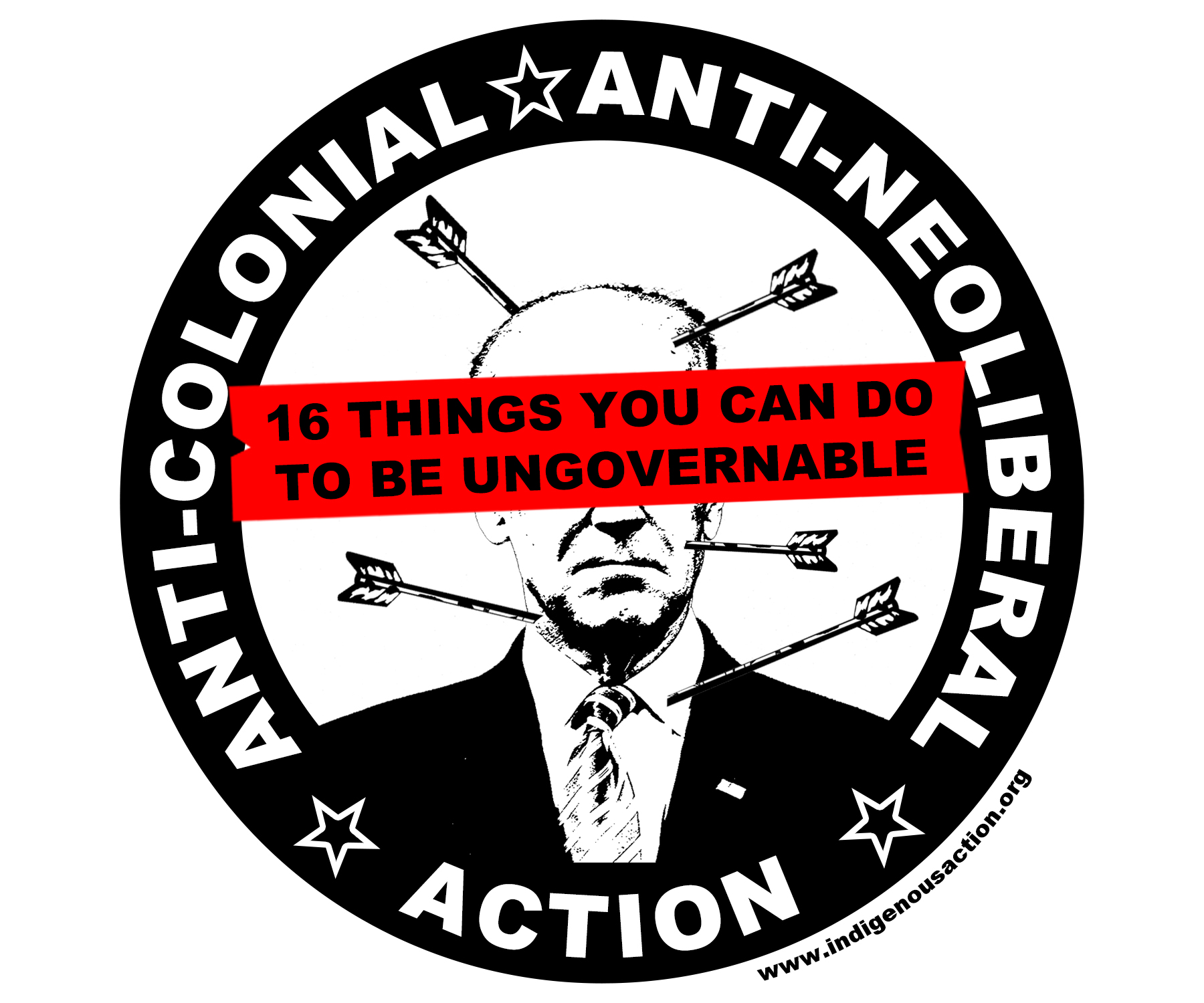Commentary & Essays
The Significance of the Declaration on the Rights of Indigenous Peoples
Published
13 years agoon
By
RudyIndigenous Elders and Medicine Peoples Council Statement – April 27, 2012
A Conference and Consultation with the United Nations Special Rapporteur on
the Rights of Indigenous Peoples
“The Creator gave the Aboriginal Indigenous Nations of the People Laws to follow and
responsibilities to care for all Creation. These instructions have been passed down from
generation to generation from the beginning of Creation. It is the Law that no one can
overpower the Creator’s Law, you are a part of Creation, thus if you break the Law, you
are destroying yourself.
We speak on behalf of all Creation: the four legged/those that swim/those that
crawl/those that fly/those that burrow in the Earth/the plant and tree Nations. This one
life system includes the elements of fire, water, earth and air, the living environment of
“Mother Earth”.
The Sanctity of the Creator’s Law has been broken. The balance of life has been
disrupted. You come into life as a sacred being. If you abuse the sacredness of your life
then you affect all Creation. The future of all life is now in jeopardy. We have now
reached the crossroads. As Aboriginal Indigenous People we ask you to work with us to
save the future of all Creation.”
The Creator created the Aboriginal Indigenous Peoples into the Land at the beginning of
Creation and also created into the Peoples the Natural Law. We have followed this
Natural law since the very beginning, passing it down through each generation to ensure
the survival of all life.
As the Original Stewards of this Land we have the responsibility to follow and uphold the
Natural Law. In order to uphold this responsibility we must be free to speak and act on
behalf of our relatives who are not easily understood by those who are new to this land
and who have little respect for the Natural Laws of this Land. The newcomers have
demonstrated their lack of respect for the Natural Law time and again throughout the
history of the United States of America, beginning with the abandonment of their own
laws and homelands and the creation of new man-made laws that have been designed to
serve destructive purposes upon our homelands. The lack of respect and abusive actions
that the United States has continually demonstrated in opposition to Natural Law is both
offensive and utterly destructive, not only to our Peoples and way of life, but to all
Creation.
Since their arrival on our lands, the newcomers have shown very little respect towards
our obligation to adhere to the Natural Law of the Creator. Instead of mutual respect there
is simply an expectation that we will respect the man-made laws that have been forced
upon us. In this way, we find that we are discriminated against, by consistently being
required to respond in black and white with a language that is not our own and which
does not convey the full depth of our concerns. Our Indigenous ways of decision-making
and speaking are often not accommodated and our ways of interaction are not honored or
recognized.
It is our inherent right to follow the Natural Law. And, it is our right to adhere to our
obligations under that Law which extend beyond man-made domestic and international
law. The government of the United States is also obligated. They are obligated to
acknowledge our right to govern ourselves and our lands.
Domestic and International law requires the United States Government to acknowledge
the Indigenous Peoples’ right to self-determination. This includes the right to live on our
lands with unrestricted access to our waters and natural areas without fear of
contamination or the threat of having our rights restricted or taken away.
In addition, the United States Government is obligated to acknowledge the right of
Indigenous Peoples to maintain and protect their “religious and cultural practices.” Based
on these legal precepts, our sacred holdings such as Eagle feathers are improperly placed
under man-made law. Those who properly maintain and care for these sacred holdings, in
accordance with our sacred teachings, are the ones to determine how they are to be used.
These sacred holdings are governed by the Creator’s Law. Yet, the United States
Government presumes to control our ceremonies by dictating how and when we can use
our sacred holdings, creating man-made laws that govern the use of our sacred holdings
and our ceremonial way of life, in direct violation of our rights as Indigenous Peoples.
These attempts to disrupt our way of life by dishonoring and disrespecting the Natural
Law have consequences. The United States and the international community are
experiencing these consequences today. They are being felt in the increased severity and
frequency of natural disasters that have been brought about by their activities and they are
being reflected in the deterioration of the social and moral standards. The need for manmade laws to be realigned with the Natural Law is urgent. This can only be accomplished if the Natural Law of the Creator, the Law held sacred by Indigenous Peoples, is included in real and meaningful ways. If the United States and International Legal Community
does not address their destruction of the natural world and the Social Injustices that result
from this destruction, immediately and urgently, by realigning their values and all future
actions with the Natural Law, then we see newly emerging threats on the horizon, threats
that pose an immediate danger to our survival as human beings.
As the sole authority on our way of life we must be included in all planning and decision
making that affects our way of life and the ability of the natural world to sustain life upon
this planet. In regard to the legal consultation requirements set forth under domestic and
international law, the United States of America is required to engage in meaningful
consultation and to attain the free, prior and informed consent of the Indigenous Peoples
before making any decisions that might impact them, their lands or their way of life.
However, even with these laws in place, there has been very little meaningful face-toface open dialogue with Indigenous Peoples. When consultation does occur the peoples whose interests and way of life will be most impacted are often disregarded or ignored, while the plans of the United States Government move forward unaltered. Consultation often results in discussions with a few individuals, generally it is with those individuals who will somehow benefit from the decisions that the United States is making. This has
endangered our water and subsistence rights and lead to the destructive extraction of our
minerals, the introduction of invasive species and numerous pollutants that have
contaminated our environment, damaged our way of life and threatened our sacred
places. The United States Government has violated our rights and disrupted our way of
life, by allowing a few individuals to illegally provide consent on our behalf. Therefore,
the United States Government and those individuals, who have participated in the
elimination of our rights, by illegally providing consent, must be held accountable for the
destruction of our lands, waters and our way of life.
True consultation requires those with decision-making authority to come to us formally
and to sit with us face-to-face, to initiate a true dialogue and proceed honorably with
consensus, so that we can establish the type of working relationship that is necessary to
address the critical environmental issues that all living beings currently face.
We recommend that as a first step towards justice and reconciliation, the International
Community conduct an independent investigation into all past and current human rights
violations, environmental violations and the violation of any and all treaty rights and
agreements. We also request that you thoroughly investigate all discriminatory practices
and failures related to reaching acceptable standards of consultation, under both domestic
and international law. The findings from this independent investigation should be made
public and must include participation from Aboriginal Indigenous Nations and people.
Recommendations and plans to restore past damage and to prevent future harms to the
Indigenous Peoples, our way of life and the natural world should be outlined in legally
binding agreements that have clear enforcement mechanisms in place.
Today, there are no mechanisms within the laws of the United States that offer any real
protections for our sacred places, the natural world or our way of life. The United States
must be held responsible for all activities and actions that it has allowed or undertaken
that have damaged, destroyed and desecrated our sacred places and the natural world that
we rely upon for our survival. Real enforcement mechanisms must be created. Legal
authority without enforcement is meaningless.
We are now in the state of survival and we must begin to sacrifice in order to provide a
future for our coming generations. We must adhere to the Natural Law. We cannot
continue to damage, desecrate or destroy parts of the natural system and expect what
remains to live unaffected. We ask that you work with us to save the future of all
Creation and to uphold, respect and honor the Natural Law.
We respectfully ask that all Nation States and human beings around the world use the
Natural Law, provided by the Creator, as a guiding light and foundation for all decision
making, from this point forward. We ask you to stand with us to protect sacred places
such as San Francisco Peaks, the Black Hills, Mount Graham, Greasy Mountain also
known as South Mountain, Bear Butte, Black Mesa, Bdote and Medicine Lake, and all
other threatened sacred places here and around the world.
We have been asked to carry sacred responsibilities for our people, to provide a future for
the coming generations. This responsibility includes the protection of all life. We are
from various Nations and we are spiritually related. We will not be divided by any
terminology that defines us as “recognized” or “unrecognized”, by the Government of the
United States or any other body. We are recognized by the Creator and we are united
under the Creator’s Law, as United Aboriginal Indigenous Nations, with a sacred
covenant to protect and extend Life for all future generations.
You may like
#policestate
Do “We keep us safe”? Notes on Action Security & Some Resources
Published
2 years agoon
September 30, 2023By
Rudy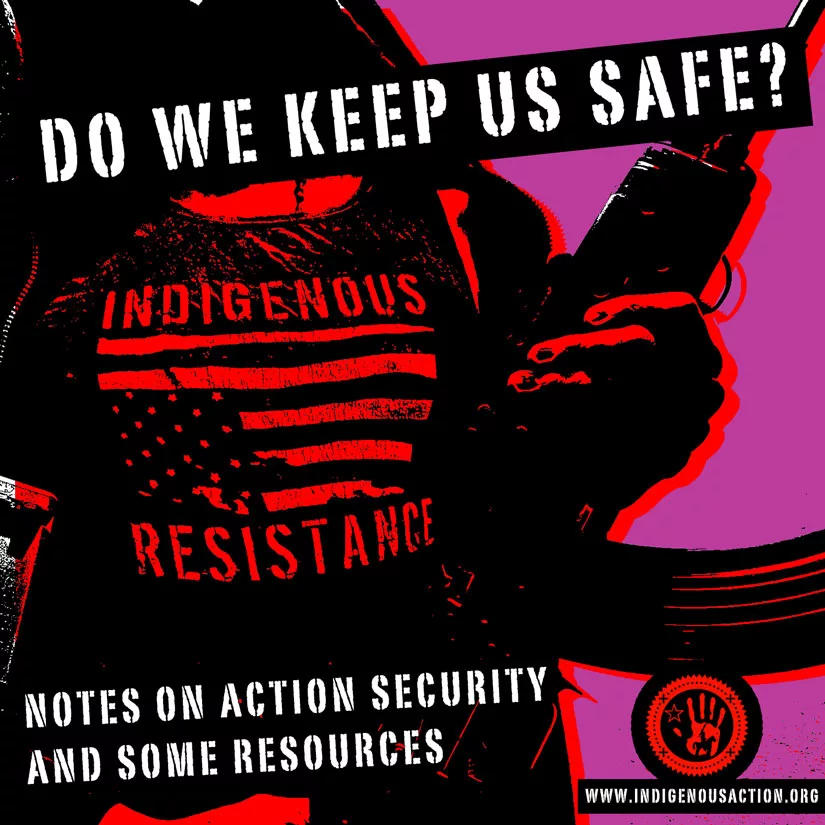
“We keep us safe!” is an abolitionist assertion that the state or some paternalistic organization will not protect us from colonial, fascist, white supremacist, queerphobic attacks, so we must organize and defend ourselves and those we are in community with.
We cannot leave this slogan to be an empty gesture or posture. It must be conveyed with the necessary training and organizing to address the hyperpoliticized and conflictual environments that we organize in.
While we cannot anticipate and prevent all fascist assaults, if we pronounce that “we keep us safe,” we can and must do what we can to organize and be prepared. Liberal and “radical” non-profit managers constantly decrying the “inactions of cops” does not keep us safe, it only invokes further police violence. Additionally, calling on colonial politicians to respond to fascist violence as a “hate crime,” is really a call to further the carceral state and its institutional violences (courts, prisons, more policing, etc).
On September 28th, 2023 Jacob Johns, an Indigenous persn was shot by Ryan Martinez, a colonial invader and MAGA fascist at an action called to confront the re-establishment of a monument to the genocidal colonizer Juan de Oñate in so-called Española, New Mexico. This shooting occurred under the same watch of an organization that hosted a previous anti-Oñate monument action in 2020 where Scott Williams was shot and severely injured.
From Heather Heyer, Joseph Rosenbaum, and Anthony Huber to many more who have been injured or killed while resisting authoritarian nationalism (aka fascism), these deadly attacks are occurring within a context of historic, ongoing, and escalating colonial violence.
Since 2020, groups based in occupied New Mexico organizing anti-monument actions have been directly challenged for putting people at serious risk. Calls that have been made for more organized security have been denounced by inexperienced organizers in these groups.
These issues and considerations are not new, the Black Panther Party for Self Defense and AIM initiated armed patrols and armed resistance in the face of state, white supremacist, and colonial terror. Amorphous entities such as Antifa and Bash Back have continually mobilized street warfare in defensive and proactive ways. These groups have long recognized that we cannot merely rely on “safety in numbers,” (though numbers do help) our enemies are more organized than that, so why aren’t we?
We cannot pronounce liberation without simultaneously preparing and mobilizing defense.
As everyone should be doing mutual aid, everyone should be prepared for mutual defense. We cannot depend on any organizers or organizations to simply do this for us. If “We keep us safe,” we better fucking mean it.
As Goldfinch Gun Club stated, “Community defense has to be about solidarity and uplift mutual aid, not just arming vulnerable peoples. By the time someone starts shooting, everyone has already lost. The best defense is a better world. It’s possible. We have to believe that.”
Support Jacob Johns, his family and community by contributing to the gofundme: https://www.gofundme.com/f/help-jacob-johns-recover-from-terrorist-shooting?utm_campaign=p_cp+share-sheet&utm_medium=copy_link_all&utm_source=customer
Some recommendations:
1. Organize and attend street medic trainings. Check these resources:
A Demonstrator’s Guide to Responding to Gunshot Wounds https://crimethinc.com/2020/09/24/a-demonstrators-guide-to-responding-to-gunshot-wounds-what-everyone-should-know
An Activist’s Guide to Basic First Aid https://www.sproutdistro.com/catalog/zines/direct-action/activists-guide-to-basic-first-aid/
2. Organize armed self defense. Check these resources:
Three Way Fight: Revolutionary Anti-Fascism and Armed-Self-Defense https://itsgoingdown.org/wp-content/uploads/2017/02/three_way_fight_print.pdf
Organizing Armed Defense in “America”
https://theanarchistlibrary.org/library/organizing-armed-defense-in-america
Gun Clubs:
https://www.hueypnewtongunclub.org/survival-programs
https://www.pinkpistols.org/about-the-pink-pistols/
https://socialistra.org/
https://www.john-brown-gun-club.org/about (Note: their founder and a lead organizer of Red Neck Revolt/JBGC is a known abuser).
3. Develop and maintain clear security protocols and presence (if not visible at least organized).
A note: By security we don’t mean leftist police, we mean skilled warriors who are identified to respond and protect, not police actions. Beware of cis-heteropatriarcal and other oppressive behaviors, substance use, & abusers, etc.
Being prepared can be an escalation in and of itself, it also can be a powerful deterrent. Do what makes sense for your operating environment.
Defend Pride
https://www.sproutdistro.com/catalog/zines/direct-action/defend-pride/
Forming an Antifa group
https://theanarchistlibrary.org/library/forming-an-antifa-group
Check out all these great resources on Security Culture:
https://www.sproutdistro.com/catalog/zines/security/
These ‘zines particularly address cop tactics but have great info for overall security:
Defend the Territory
https://www.sproutdistro.com/catalog/zines/direct-action/defend-the-territory
Warrior Crowd Control & Riot Manual
https://www.sproutdistro.com/catalog/zines/direct-action/warrior-crowd-control-riot-manual/
Other resources:
Dangerous Spaces: Violent Resistance, Self-Defense, and Insurrectional Struggle Against Gender
https://archive.org/details/dangerous-space-EN-pageparpage/mode/2up
Repress This
https://itsgoingdown.org/wp-content/uploads/2018/02/imposed-repress_this_print.pdf
#nonukes
A quick & dirty review of the movie Oppenheimer
Published
2 years agoon
July 20, 2023By
Rudy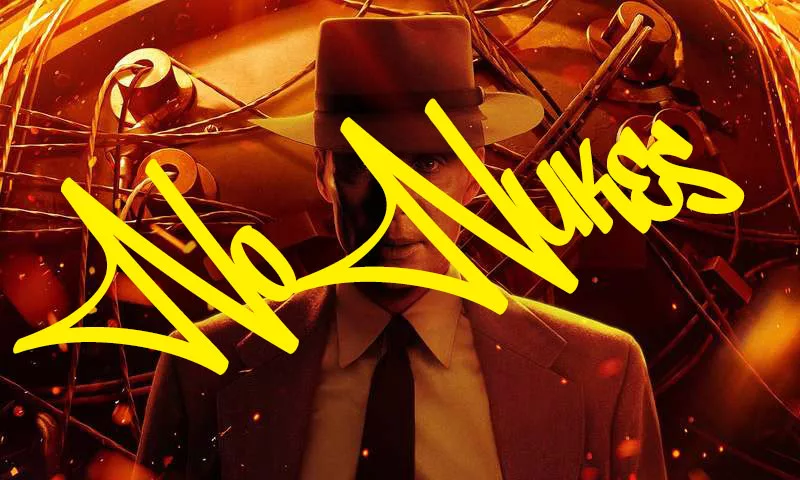
We watched this movie after arguing with social media pro-nuke apologists who accused us of being ill-informed as not having viewed Christopher Nolan’s biopic, so excuse the mess… (and if you haven’t already, read our initial post here for the context).
Oppenheimer is a glorification of the “complicated genius” and ambitions of white men making terrible decisions that imperil the world.
Many have remarked that the film is not a glorification, yet Christopher Nolan himself says, “Like it or not, J Robert Oppenheimer is the most important person who ever lived.”
Some of you may have even had a burst of laughter during the scene where Truman asked Oppenheimer what he thought the fate of Los Alamos should be and “Oppie” retorted, “Give the land back to the Indians.” But alas, the poisoned scarred landscape today is host to a 10-day “Oppenheimer Festival.” To underscore the disconnect of legacies, a small commemoration near the Churchrock spill site was also held on the anniversary of the Trinity detonation, a few hundred miles away. Yes, what glorification?
The movie is basically a Western à la John Wayne. It very well could have been called, “The Trial of the Sheriff of Los Alamos.”
Oppenheimer rides his horse with a black hat on and pulls a poster down from a fence post. He then strides into a debate on the “Impact of the gadget on civilization.” To respond to the question of how scientists can justify using the Atom Bomb on human beings, Oppenheimer speaks, “We’re theorists yes, we imagine a future and our imaginings horrify us. They won’t fear it until they understand it and they won’t understand it until they’ve used it. When the world learns the terrible secret of Los Alamos our work here will ensure a peace mankind has never seen. A peace based on international cooperation.”
Nolan establishes the only narrative that matters is his attempt at historical redemption, he paints Oppenheimer as a victim. While perhaps not as depoliticized as Nolan alluded to in interviews (as the politics of American loyalty and the Red Scare drive the drama), the consequences of nuclear weapons and energy is barely considered (arguably barely at all considering the issue). This is a political omission of the most insidious sort and the film is even worse for it.
The movie cares more about constructing and clearing Oppenheimer as a victim of McCarthyism than the impacts of the atomic bomb and its deadly legacy of nuclear colonialism. As it’s stated, there’s a “Price to be paid for genius.” Everything else is dramatic notation. Nolan gives Oppenheimer the public hearing he feels like he was denied to ultimately prove he was an American patriot. In the end, the question “Would the world forgive you if you let them crucify you?” matters above all other concerns. The movie poses the argument as “science versus militarism” while the world and Indigenous Peoples continue to suffer the permanent consequences of nuclear weapons and energy in silence. A deadly silence more deafening than Nolan’s cinematic portrayal of the Trinity test. But hey, there’s even a minute of cheering after the test.
Nolan has us listening to the radio while two cities are destroyed and hundreds of thousands of lives are taken. Nolan keeps the camera on his lead actor’s face while the horrors of his bomb are shown on slides. Oppenheimer simply looks away. What more about this film do we need to know?
15,000 abandoned uranium mines poisoning our bodies, lands, and water. 1,000 bombs detonated on Western Shoshone lands… the list goes on (we only stop here because we’ve stated much more in our original post). All omitted and sentenced to suffer in catastrophic silence. Films like Oppenheimer are only possible because people keep looking away from the deadly reality of nuclear weapons and energy.
#nonukes
Architect of Annihilation: Oppenheimer’s Deadly Legacy of Nuclear Terror
Published
2 years agoon
July 20, 2023By
Rudy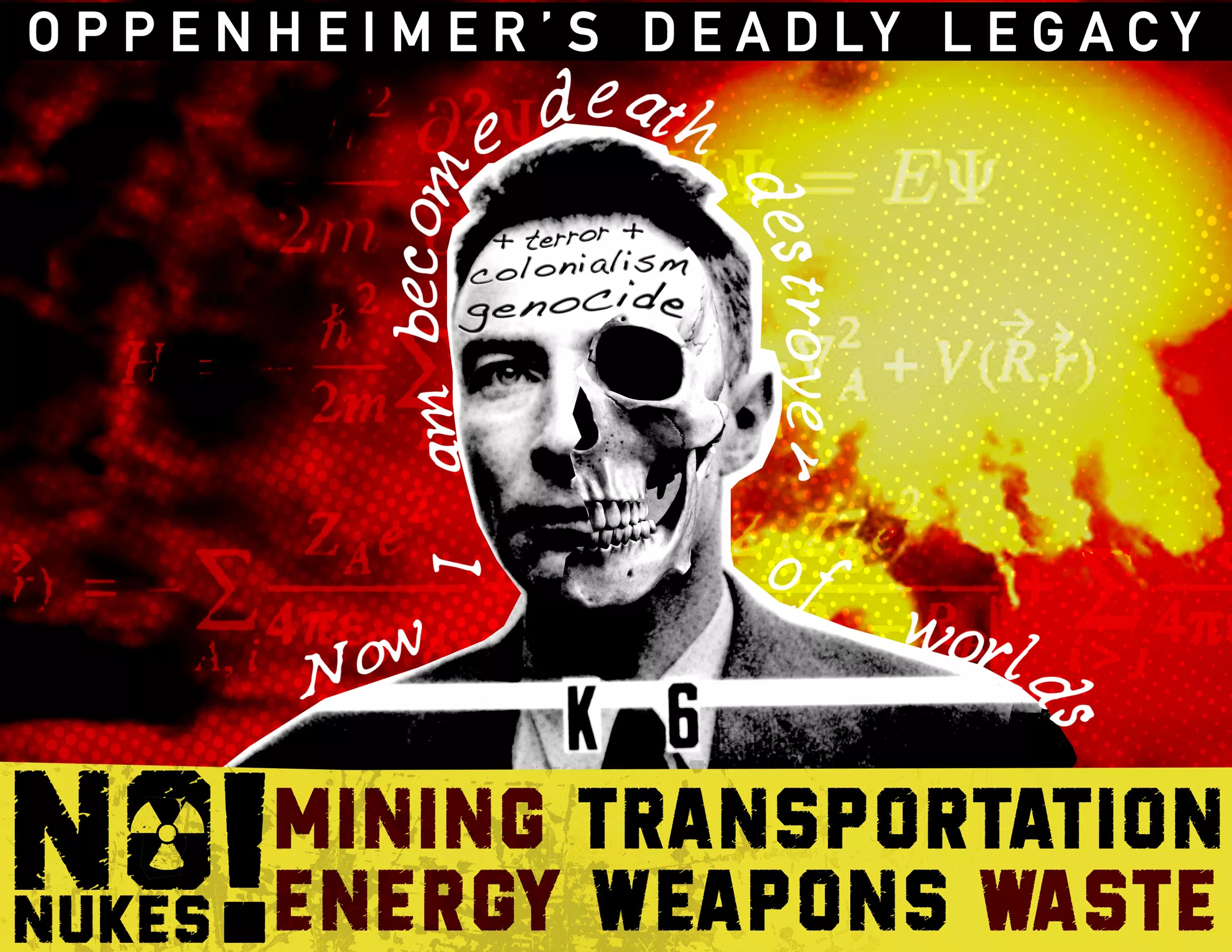
Read our quick and dirty review of the movie here.
Klee Benally, Indigenous Action/Haul No!
Contributions by Leona Morgan, Diné No Nukes/Haul No!
Printable posters (PDFs): 11″x17″ color, 11″x17″ black & white
The genocidal colonial terror of nuclear energy and weapons is not entertainment.
To glorify such deadly science and technology as a dramatic character study, is to spit in the face of hundreds of thousands of corpses and survivors scattered throughout the history of the so-called Atomic age.
Think of it this way, for every minute that passes during the film’s 3-hour run time, more than 1,100 citizens in the cities of Hiroshima and Nagasaki died due to Oppenheimer’s weapon of mass destruction. This doesn’t account for those downwind of nuclear tests who were exposed to radioactive fallout (some are protesting screenings), it doesn’t account for those poisoned by uranium mines, it doesn’t account for those killed during nuclear power plant melt-downs, it doesn’t account for those in the Marshall Islands who are forever poisoned.
For every second you sit in the air conditioned theater with a warm buttery popcorn bucket in your lap, 18 people dead in the blink of an eye. Thanks to Oppenheimer.
Though you’ll certainly learn enough about J. Robert Oppenheimer, the “father of the atomic bomb,” thanks to director Christopher Nolan’s 70mm IMAX odyssey, let’s be clear about his deadly legacy and the overall military and scientific industrial complex behind it.
After the successful detonation of the very first atomic bomb, Oppenheimer infamously quoted the Hindu scripture Bhagavad-Gita, “Now I am become death, the destroyer of worlds.” Barely a month later, the “U.S” dropped two atomic bombs devastating the cities of Hiroshima and Nagasaki and more than 200,000 people were killed. Some of the shadows of those perished were burned into the streets. One survivor, Sachiko Matsuo, relayed their thoughts as they tried to make sense of what was happening when Nagasaki was struck, “I could see nothing below. My grandmother started to cry, ‘Everybody is dead. This is the end of the world.” A devastation that Nolan intentionally leaves out because, according to the director, the film is not told from the perspectives of those who were bombed, but by those who were responsible for it. Nolan casually explains, “[Oppenheimer] learned about the bombings of Hiroshima and Nagasaki on the radio, the same as the rest of the world.”
Months after the atomic detonation at the “Trinity” site in occupied Tewa lands of New Mexico, Oppenheimer resigned. He walked away expressing the conflict of having, “blood on his hands,” (though reportedly he later said the bombings were not “on his conscience”) while leaving a legacy of nuclear devastation and radioactive pollution permanently poisoning lands, waters, and bodies to this day.
U.S. military and political machinery cannibalized the scientist and turned him into a villain of their imperialist cold-war anxiety. They reminded him and the other scientists behind the Manhattan Project, that they and their interests were always in control.
Oppenheimer never was a hero, he was an architect of annihilation.
The race to develop the first atomic bomb (after Nazis had split the atom) never could be a strategy of peaceful deterrence, it was a strategy of domination and annihilation.
Nazi Germany was committing genocide against Jewish people while the U.S. sat on the political sidelines. It wasn’t until they were directly threatened that the U.S. intervened. Though Nazi Germany was defeated on May 8th, 1945, the U.S. dropped two separate atomic bombs on the non-military targets of the Japanese cities of Hiroshima and Nagasaki on August 6th and 9th, 1945.
To underscore Oppenheimer’s complicity, he suppressed a petition by 70 Manhattan Project scientists urging President Truman not to drop the bombs on moral grounds. The scientists also argued that since the war was nearing its end, Japan should be given the opportunity to surrender.
Today there are approximately 12,500 nuclear warheads in nine countries with almost 90 percent of them held by the U.S. and Russia. It is estimated that 100 nuclear weapons is an “adequate… deterrence” threshold for the “mutually assured destruction” of the world.
Oppenheimer built the gun that is still held to the head of everyone who lives on this Earth today. Throughout the decades after the development of “The Bomb,” millions throughout the world have rallied for nuclear disarmament, yet politicians have never taken their fingers off the trigger.
The Deadly Legacy of Nuclear Colonialism
Nuclear weapons production and energy would not be possible without uranium.
Global uranium mining boomed during and after World War II and continues to threaten communities throughout the world.
Today, more than 15,000 abandoned uranium mines are located within the so-called U.S., mostly in and around Indigenous communities, permanently poisoning sacred lands and waters with little to no political action being taken to clean up their deadly toxic legacy.
Indigenous communities have long been at the front lines of the struggle to stop the deadly legacy of the nuclear industry. Nuclear colonialism has resulted in radioactive pollution that has poisoned drinking water systems of entire communities like Red Shirt Village in South Dakota and Sanders in Arizona. The U.S. Environmental Protection Agency has closed more than 22 wells on the Navajo Nation where there are more than 523 abandoned uranium mines. In Ludlow, South Dakota an abandoned uranium mine sits within feet of an elementary school, poisoning the ground where children continue to play to this day.
Nuclear colonialism has ravaged our communities and left a deadly legacy of cancers, birth defects, and other serious health consequences, it is the slow genocide of Indigenous Peoples.
From 1944 to 1986 some 30 million tons of uranium ore were extracted from mines on Diné lands. Diné workers were told little of the potential health risks with many not given any protective gear. As demand for uranium decreased the mines closed, leaving over a thousand contaminated sites. To this day none have been completely cleaned up.
On July 16, 1979, just 34 years after Oppenheimer oversaw the July 16, 1945 Trinity test, the single largest accidental release of radioactivity occurred on Diné Bikéyah (The Navajo Nation) at the Church Rock uranium mill. More than 1,100 tons of solid radioactive mill waste and 94 million gallons of radioactive tailings poured into the Puerco River when an earthen dam broke. Today, water in the downstream community of Sanders, Arizona is poisoned with radioactive contamination from the spill.
Although uranium mining is now banned on the reservation due to advocacy from Diné anti-nuclear organizers, Navajo politicians have sought to allow new mining in areas already contaminated by the industry’s toxic legacy. It is estimated that 25% of all the recoverable uranium remaining in the country is located on Diné Bikéyah.
Though there has never been a comprehensive human health study on the impacts of uranium mining in the area, a focused study has detected uranium in the urine of babies born to Diné women exposed to uranium.
Western Shoshone lands in so-called Nevada, which have never been ceded to the “U.S.” government, have long been under attack by the military and nuclear industries.
Between 1951 and 1992 more than 1,000 nuclear bombs have been detonated above and below the surface at an area called the Nevada Test Site on Western Shoshone lands which make it one of the most bombed nations on earth. Communities in areas around the test site faced severe exposure to radioactive fallout, which caused cancers, leukemia & other illnesses. Those who have suffered this radioactive pollution are collectively known as “Downwinders.”
Western Shoshone spiritual practitioner Corbin Harney, who passed on in 2007, helped initiate a grassroots effort to shutdown the test site and abolish nuclear weapons. He once said, “We’re not helping Mother Earth at all. The roots, the berries, the animals, are not here anymore, nothing’s here. It’s sad. We’re selling the air, the water, we’re already selling each other. Somewhere it’s going to come to an end.”
Between 1945 and 1958, sixty-seven atomic bombs were detonated in tests conducted in Ṃajeḷ (the Marshall Islands). Some Indigenous people of the islands have all together stopped reproducing due to the severity of cancer and birth defects they have faced due to radioactive pollution.
In 1987 the “U.S.” congress initiated a controversial project to transport and store almost all of the U.S.’s toxic waste at Yucca Mountain located about 100 miles northwest of so-called Las Vegas, Nevada. Yucca Mountain has been held holy to the Paiute and Western Shoshone Nations since time immemorial. In January 2010 the Obama administration approved a $54 billion dollar taxpayer loan in a guarantee program for new nuclear reactor construction, three times what Bush previously promised in 2005.
There are currently 93 operating nuclear reactors in the so-called U.S. that supply 20% of the country’s electricity. There are nearly 90,000 tons of highly radioactive spent nuclear waste stored in concrete dams at nuclear power plants throughout the country with the waste increasing at a rate of 2,000 tons per year.
From the 1979 disasters of Three Mile Island and Churchrock to the 1986 Chernobyl Nuclear Power Plant melted down, the nuclear industry has been wrought with mass catastrophes with permanent global consequences.
In 2011 Fukushima Daiichi Nuclear Power Plant catastrophically failed and began melting down after it was hit by an earthquake and tsunami. It’s been reported that the Fukushima plant has been leaking approximately 300 tons of radioactive water into the ocean every day. Today, the Japanese government is open about its plans to release remaining radioactive waters into the Pacific.
“Depleted Uranium” weapons deployed by the U.S. in imperialist wars (particularly Iraq and Afghanistan) have also poisoned eco-systems, including at proving grounds and firing ranges in Arizona, Maryland, Indiana and Vieques, Puerto Rico. Depleted uranium is a by-product of uranium enrichment process when it’s used for nuclear reactor fuel and in the making of nuclear weapons.
Nuclear energy production is now claimed as a “green solution” to the climate crisis, but nothing could be further from the truth of this deadly lie.
In April 2022, the Biden administration announced a $6 billion government bailout to “rescue” nuclear power plants at risk of closing. A colonial government representative stated, “U.S. nuclear power plants contribute more than half of our carbon-free electricity, and President Biden is committed to keeping these plants active to reach our clean energy goals.” They, along with Climate Justice activists cite nuclear energy as necessary to combat global warming, all while ignoring the devastating permanent impacts Indigenous Peoples have faced.
Due to this “greenwashing” of nuclear energy, we face a push for nuclear hydrogen, small modular nuclear reactors, and High-Assay Low-Enriched Uranium (HALEU) driving a renewed threat of new uranium mining, transportation, & processing.
Though the Obama administration placed a moratorium on thousands of uranium mine leases around the Grand Canyon in 2012, pre-existing uranium claims were allowed. Environmental groups and Indigenous Nations are currently attempting to make the moratorium permanent and push for a new national monument, yet these will do little to nothing for the handful of pre-existing uranium mines that have been allowed to move forward.
Despite these actions, underground blasting & above ground work has begun at Pinyon Plain/Canyon Mine, just miles from the Grand Canyon. Once Energy Fuels, the company operating the mine, starts hauling out radioactive ore, they plan to transport 30 tons per day through Northern Arizona to the company’s processing mill in White Mesa, 300 miles away.
The White Mesa Mill is the only conventional uranium mill licensed to operate in the U.S. The mill was built on sacred ancestral lands of the Ute Mountain Ute Tribe near Blanding, Utah. Energy Fuels disposes radioactive and toxic waste tailings in “impoundments” that take up about 275 acres next to the mill. Since there are limited radioactive waste facilities, White Mesa Mill has become an ad hoc dump for the world’s nuclear wastes that have no final repository.
In so-called New Mexico, a state addicted to nuclear monies for both nuclear weapons and energy facilities, there are two national nuclear labs and two national waste facilities. Along with legacy uranium mines and mills, there was Project Gasbuggy (an underground detonation), a “Broken Arrow” accident near Albuquerque, and countless tons of radioactive waste buried in unlined pits, Pueblo kivas, and watersheds. Currently, there are planned expansions and modifications at Los Alamos National Labs, the Waste Isolation Pilot Plant, and Urenco uranium enrichment facility. Most recently, the state has been threatened by two newly licensed consolidated interim storage facilities for “spent fuel” from nuclear power plants in New Mexico and Texas. The federal government continues to push nuclear projects with financial incentives.
Nuclear proliferation continues as the U.S. allows uranium miners and others who are eligible for the Radiation Exposure Compensation Act to die. Many continue to suffer and wait for compensation funds to be allocated or are not eligible due to the limitations of the act.
The devastation of nuclear colonialism, which permanently destroys Indigenous communities throughout the world, is not entertainment. This is the terrifying legacy of nuclear energy and weapons that movies like Oppenheimer and duplicitous climate justice activists advocate.
Indigenous Peoples live, suffer, and continue to resist its consequences every day.
END NUCLEAR COLONIALISM!
###
Recommended links:
https://haulno.com
http://www.dinenonukes.org
https://tewawomenunited.org/programs/environmental-health-and-justice-program
https://stopforeverwipp.org/home
https://www.trinitydownwinders.com/
http://www.cleanupthemines.org
https://www.nirs.org/
https://www.radioactivewastecoalition.org
https://www.dont-nuke-the-climate.org/
https://www.nuclear-heritage.net/index.php?title=Nuclear_Heritage_Network
https://yukiyokawano.com
https://www.youtube.com/watch?v=vBO_C6GkIpM&t=10s
https://apjjf.org/2022/1/Schattschneider-Auslander.html
Articles:
Red Water Pond Road
https://www.washingtonpost.com/national/a-radioactive-legacy-haunts-this-navajo-village-which-fears-a-fractured-future/2020/01/18/84c6066e-37e0-11ea-9541-9107303481a4_story.html
ABQ Museum
https://www.abqjournal.com/lifestyle/arts/albuquerque-museums-online-exhibit-trinity-takes-a-look-at-the-aftermath-of-the-atomic-bomb/article_33d17c15-61c8-5e1f-b32c-99f4ebee5db4.html
Get updates via email, sign up here:
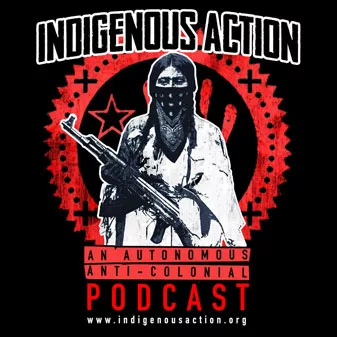
Indigenous Action Podcast
- Indigenous Action Podcast Ep. 18: No Settler Future An Anti-Year in Review (sorta)
- Indigenous Action Podcast Episode 17: Decolonization isn’t a Holiday
- Indigenous Action Podcast Episode 16: Fuck a Valentine, Indigenous Abolition Feminism
- Indigenous Action Podcast Episode 15: 15th Annual No Thanks, No Giving: Indigenous Anarchism
- Indigenous Action Podcast Episode 14: Queering #MMIWG2ST
Popular Posts
-

 Commentary & Essays11 years ago
Commentary & Essays11 years agoAccomplices Not Allies: Abolishing the Ally Industrial Complex
-

 anti-colonial5 years ago
anti-colonial5 years agoVoting is Not Harm Reduction – An Indigenous Perspective
-

 Feature Front2 years ago
Feature Front2 years agoThe family of Klee Benally thanks you for the donations!
-

 anti-colonial5 years ago
anti-colonial5 years agoRethinking the Apocalypse: An Indigenous Anti-Futurist Manifesto
-

 #nonukes12 years ago
#nonukes12 years agoIndigenous Elders and Medicine Peoples Council Statement on Fukushima
-

 anti-colonial4 years ago
anti-colonial4 years agoUnknowable: Against an Indigenous Anarchist Theory – Zine
-

 #nonukes15 years ago
#nonukes15 years agoUranium Mining Begins Near Grand Canyon
-

 #policestate5 years ago
#policestate5 years ago16 Things You Can Do To Be Ungovernable. P.S. Fuck Biden
